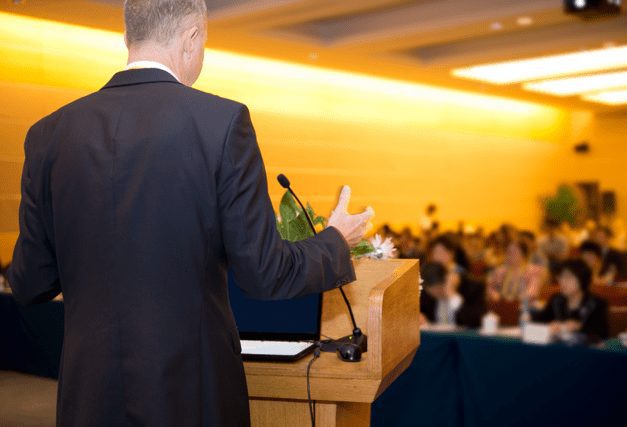
29 Feb Technical Presentations – Top 3 Strategies to Get Your Audience to Listen
Reading Time: 3 minutesDoes this sound familiar?
Michael took the stage in front of a crowd of business executives. He was presenting the findings of a recent customer engagement survey. Before he was even 5 minutes into his presentation, he noticed the audience was distracted. Some were on their phones, others daydreaming, and even a few were nodding off. As he finished reviewing the findings, he walked off of the stage thinking to himself, “I know this isn’t the most exhilarating information, but how can I keep the audience engaged and still review the details?”
You may have been in Michael’s shoes once, or sat in the audience of a sleep-inducing presentation. Presenting technical information requires a delicate balance of conversational connection and attention to detail – a skill that takes time and preparation to achieve. Our business AdInfusion consultants have outlined the top 3 strategies you can use to make technical presentations more engaging, effective, and memorable.
-
- Approach the information as you would an interesting story. When you stand to talk, imagine yourself as a great orator telling a story. If you dump loads of information on the audience, you will likely sound monotonous, and the audience will quickly become disengaged. Craft the information into a story to make it more conversational and easier for the audience to connect with and follow. Consider beginning your talk by sharing a story that explains why the information you’re about to present is needed and the possible implications that may result. Then, slowly transition into the “meat” of the presentation by showcasing the important points you want the audience to remember.
- Focus on getting your message through to each person.Make an effort to look into the eyes of the audience members, one at a time, and speak directly to them. Standing so you are able to easily scan the room and look at your audience is key to connecting with them. As you need to breathe and collect your thoughts, don’t forget to pause. This allows the audience to respond or ask questions and invite them to engage in discussion around the information you have presented. Remember to check in with your listeners, and ask if they need additional clarification, before moving on to another topic. Look for nonverbal cues that the audience is losing focus and find ways to reconnect with them – short 5-minute stretch breaks work well for this!
- Convey the information with a sense of excitement. One exercise you can do is to imagine that you are in the middle of a life-saving situation. Think about how fast your heart might be racing, how energized you would feel, and how animated you might become. The same level of excitement or the adrenaline rush you might feel in an urgent situation, should be used to deliver the information. As the speaker, it is your job to bring the technical information to life through your words, body language, and tone.
When you prepare for your next technical presentation or talk, consider recording yourself to better get a feel for how you may sound to an audience. Find ways to infuse stories, appealing visuals, and a conversational approach to make the information easier for the audience to digest. Take time, before your talk, to identify your key message(s) and be sure that your delivery and content align with these. Remember, if you can’t determine the importance and the key takeaways of the technical information you are presenting, then your audience will likely not be able to either.
Our How You Say It business communication skills program is a great vehicle to practice some of these strategies and many more. Every step counts on your communication journey because master communicators are not born overnight. Instead, they are developed over time with patience and guidance. If you have additional technical presentations strategies that you have found to be effective, we’d love for you to share them with us on LinkedIn.

